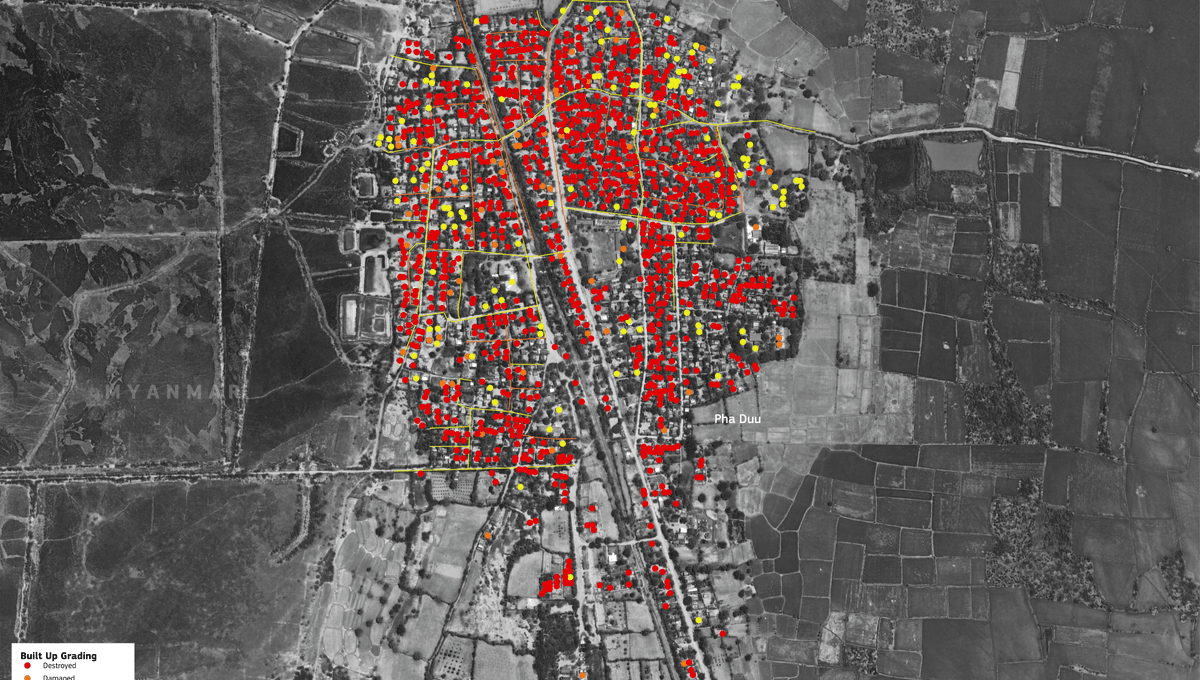
From CCTV and smartphones to dashcams and smart doorbells, cameras follow your every step in the 21st century. While the constant threat of ever-watching eyes may be turning us into a self-conscious surveillance society, it does make for some interesting science occasionally. Case in point: a security camera in Myanmar captured something never before seen on film: a strike-slip fault in action.
In a new study, geophysicists at Kyoto University have used the first-of-its-kind footage to study the movement of Earth’s fault in real time.
A strike-slip fault is a geological feature where two blocks of the Earth’s crust slide past each other horizontally, like two cars brushing by on a narrow road. During bouts of tectonic activity, these blocks can suddenly shift in opposite directions, releasing energy that can trigger earthquakes.
Most of what we know about this tectonic activity is from the analysis of seismic data gathered from seismology tools that are some distance from the event. However, this footage from Myanmar provides researchers with a front-row seat to the action.
The event occurred on March 28, 2025, in the city of Mandalay, the second-largest city in Myanmar. It was part of a magnitude 7.7 earthquake, which was felt as far away as Thailand, leaving at least 4,900 people dead. The massive earthquake began along the Sagaing Fault, a massive 1,400-kilometer (870-mile) crack in the Earth’s crust that separates two tectonic plates, the Burma Microplate and the Sunda Plate.
It then tore through the ground at incredible speed, covering more than 460 kilometers (286 miles). In some places, the ground shifted horizontally by several meters, which was captured by the CCTV footage.
The researchers studied the video frame-by-frame using a technique known as pixel cross-correlation. This revealed that the fault slipped sideways 2.5 meters (over 8 feet) in just 1.3 seconds, with a maximum speed of 3.2 meters (10.4 feet) per second.
The total movement is normal for this type of earthquake, but the speed at which it happened is a surprising and important discovery.
“The brief duration of motion confirms a pulse-like rupture, characterized by a concentrated burst of slip propagating along the fault, much like a ripple traveling down a rug when flicked from one end,” Jesse Kearse, corresponding author from the Department of Geophysics at Kyoto University, said in a statement.
The analysis also shows that the slip path is slightly curved, as opposed to being completely linear, just as previous studies have suggested.
“We did not anticipate that this video record would provide such a rich variety of detailed observations. Such kinematic data is critical for advancing our understanding of earthquake source physics,” said Kearse.
On the other side of the planet in eastern Canada, a family’s doorbell camera captured the video and audio of a meteorite as it struck the Earth right outside their house. It’s a good job the homeowner set off promptly on his dog walk, otherwise he could have become the second person in history to have been confirmed to be hit by a meteorite.
The study is published in The Seismic Record.
Source Link: Strike-Slip Fault Earthquake Caught On CCTV For First Time Ever In Myanmar